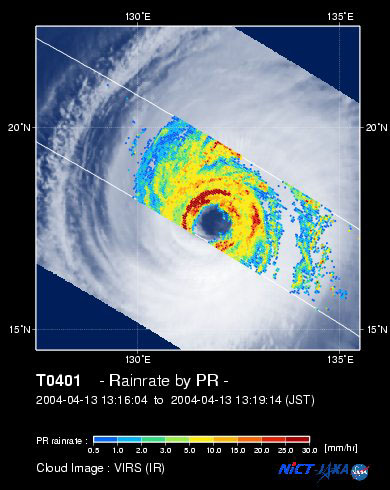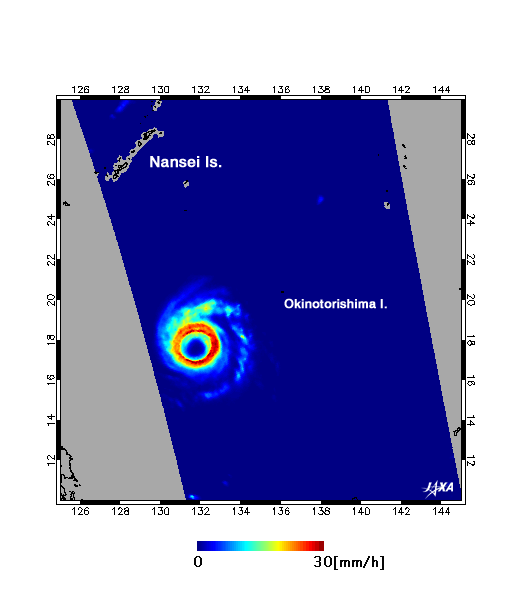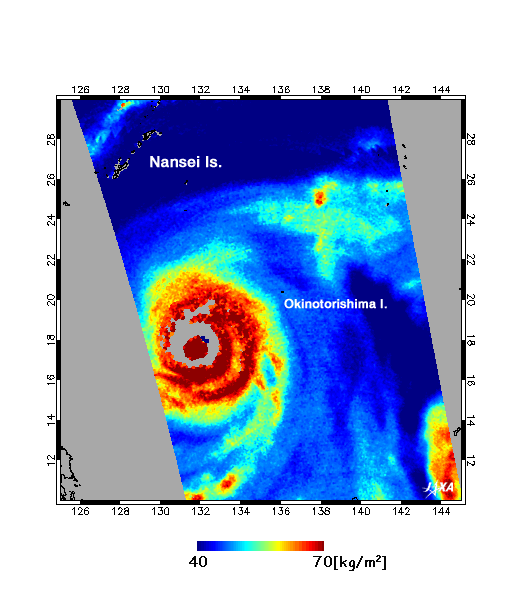Seen from Space 2004
Typhoon No. 1 (Sudal) in 2004
The PR and VIRS sensors aboard the Tropical Rainfall Measuring Mission (TRMM) satellite and AMSR-E aboard the Aqua satellite captured Typhoon No. 1 (Sudal) in 2004. Figure 1 is a super-imposed image of rain rates near the Earth surface observed by PR and the cloud image observed by VIRS. You can see the clear eye and the surrounding strong precipitation area developing isotropically aound the eye.
Figure 2 (Fig. 3) indicates the precipitation (integrated water vapor) observed by AMSR-E. You can also see the strong, isotropic precipitation area around the eye and the large volume of water vapor distributed and gathered near the typhoon. Typhoon No. 1 (Sudal) this year was born near 8 degrees north 149 degrees east around 9 o'clock AM (JST) April 5. It first developed and proceeded westward, proceeded northeastward in the eastern sea off the Philippines on April 14, and passed by the Ogasawara islands on April 15. It is not rare for the first typhoon to be born in April. According to the JMA's typhoon statistics material (Japanese only), 10 "first" typhoons were born in this area during the past 54 years. The first typhoon was born in January 21 times during the same period. In the earliest case, typhoon No. 1 took place on January 2, 1979. In the latest case, it was on July 8, 1998 (link to the observed image). JAXA EORC will continue observing typhoons by using TRMM and Aqua satellites. Related sites:
|







